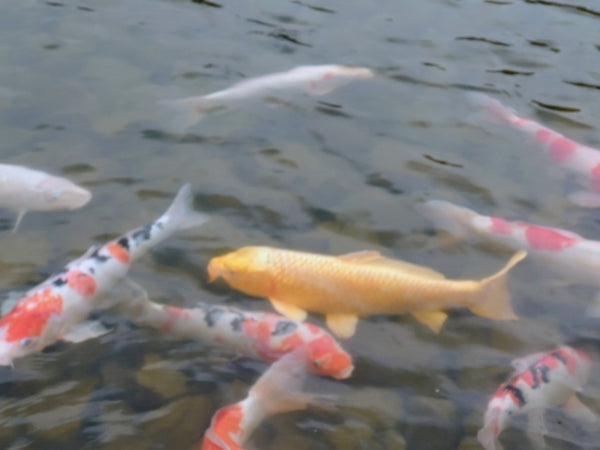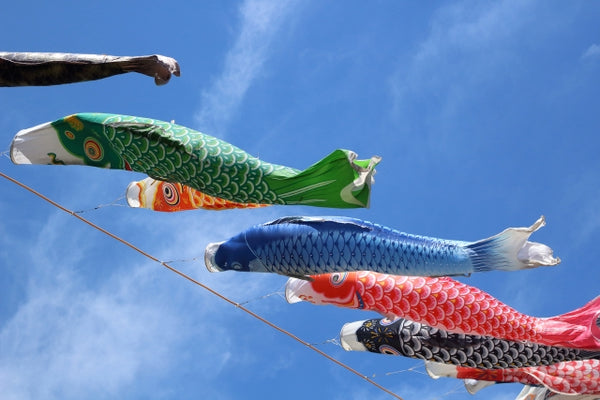
One of the most iconic fish in the world (if one can call fish iconic…) has to be the koi fish. From trending tattoos to appearances in pop culture, they’re recognized around the world and have a strong association with Japanese culture. That’s for good reason! The koi fish is in fact the national fish of Japan. But some might wonder, how did the koi fish become such a symbol and why is it so revered in Japan?
Originating in China, where they were farmed since the 5th century BCE, koi fish were first introduced to Japan as a food source in the 1st century CE. It was from China that they carried with them the mystical and spiritual status they eventually acquired in Japan. The origin of this status lies in a mythical story in which a school of golden koi demonstrate resilience and perseverance by remaining undaunted throughout their perilous trip up the Yellow River in China. It is said that once they reached the river’s end, the school of golden koi were met with a towering waterfall. While some were deterred, a few persisted in scaling the cascading water. Annoyed by their tenacity, a group of local demons decided to make the waterfall even longer out of spite, but that did not stop the koi. They persevered for a whole century and eventually reached the top, where the gods transformed them into golden dragons.

While the koi in this story are golden, the ones originally brought to Japan were likely no more colorful than any other fish. The turning point came when a farmer noticed an orange spot on one of his fish and began breeding koi for color. As more farmers adopted this hobby, the practice spread across Japan, leading to the breeding and trading of decorative koi varieties, known as Nishikigoi. These koi eventually became prized possessions and even pets! Interestingly, in Japanese, "koi" is a homophone for "love" and "friendship", concepts these fish have come to represent. If you happen to find yourself in Japan during late spring, you’ll see unique streamers decorating Japanese homes. Known as koi nobori, these windsocks symbolize the family and are used to celebrate Children’s Day.
Love and friendship isn’t all that koi fish symbolize, however. Harkening back to the story of the golden koi fighting against the powerful current of the waterfall, they also symbolize strength, courage, patience, and success in the face of great obstacles. In fact, different colored koi represent different facets of these meanings. Gold koi stand for wealth, prosperity, and growth. Red and white, or Kohaku, symbolize career success as well as compassion and love. Platinum koi, or ogon, are symbols for business success and material wealth. Blue and yellow koi, known as ochiba, symbolize the changing of the seasons and different transitions in life. Butterfly koi stand for elegance, beauty, and harmony.

With the strong symbolism these fascinating fish carry, it’s no surprise that koi and koi-themed art and artifacts are prevalent throughout Japan. The meanings of friendship and love have even transcended borders,as koi have come to symbolize peace around the world! Who would have thought a fish could hold so much meaning?
About the author:
 Kevin Kilcoyne
Kevin Kilcoyne






Leave a comment (all fields required)